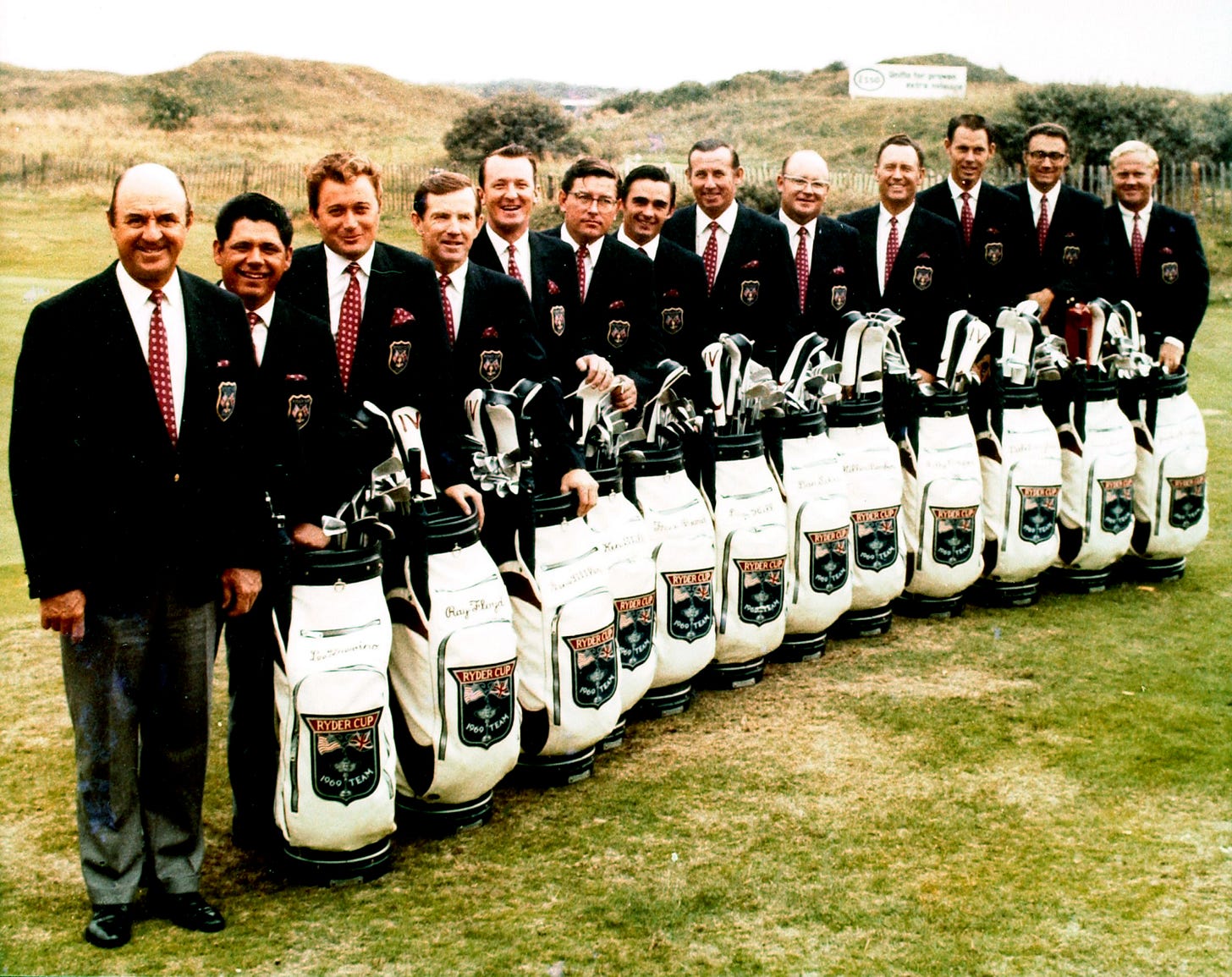Press Coverage of "The Concession" Doesn't Mention the Word "Concession"
For such a celebrated and iconic moment of sportsmanship in the Ryder Cup, it is surprising that the act did not get any press coverage.
It is an iconic moment in Ryder Cup history that highlights a level of sportsmanship rarely seen since in the biannual affair. The moment even has a name. “The Concession” by Jack Nicklaus to Tony Jacklin on the 18th hole of the final match that resulted in a draw of not only their singles match, but for the cup itself. The United States team came into the matches with possession of the cup, and the draw resulted with the Yanks retaining possession. The act of Jack’s concession lives on in Ryder Cup lore and even led to Jacklin and Nicklaus collaborating on a course design that was christened The Concession Golf Club.
“I don’t think you would have missed that putt, but I wasn’t going to give you the chance,” Nicklaus said to Jacklin upon returning his coin after the concession. Nicklaus knew, in the moment, how much missing the putt in front of the home crowd would have meant to Jacklin. And if he missed the putt, it wouldn’t have changed the outcome as far as the awarding of the cup went. Jacklin was a national hero after winning the 1969 Open Championship, the first British player to do so in 18 years.
For a moment that carries so much historical significance, one would think that it would have dominated the press accounts of the final day of the 1969 Ryder Cup matches. But that wasn’t the case. The Associated Press account of the final day included four paragraphs on the 35-foot eagle putt that Jacklin made on the 17th hole to square the match. The article did not include the word “concession” in the reporting of the action on the 18th green, simply stating that the hole was halved.
The reporting from the New York Times Service was similar to the AP reporting as was the coverage by United Press International. Not one mention of the conceded putt by Nicklaus. Jim Murray, the syndicated columnist for the L.A. Times, excoriated the American team for doing no better than a tie, but he, too, never mentions the conceded putt. Gwilym S. Brown, wrote about the matches in the September 29, 1969 edition of Sports Illustrated and he wrote that Jacklin had secured his par (he was actually putting for a birdie) before Nicklaus attempted his 5-foot birdie putt. Jack made his putt and then bent over to pick up Jacklin’s coin conceding the birdie, and the tie.
It was quite the finish to the matches that were rancorous with bad blood between the two teams. Eric Brown, the captain of the Great Britain and Ireland team, instructed his players to not help the American team look for balls in the tall rough at Royal Birkdale (he later rescinded this edict). There were rules incidents and during the Friday round, one of these almost erupted into a fist fight.
It's not surprising that the press coverage of the event was sparse compared to today’s wall-to-wall coverage; it was football season and many reporters who would be covering golf were covering football, the competitiveness of the event during this time did not capture the public’s attention, there was not a Golf Channel with a week-long runup of “Live From the Ryder Cup” broadcasts and there was not a focus on what was going on in the team rooms. While there wasn’t any coverage in the newspaper press or in the Sports Illustrated coverage, there may have been revelations in the golf magazines in the months that followed the event.
The legend of “The Concession” has grown over the years to represent one of the finest examples of sportsmanship in Ryder Cup history, but at the time it was hardly noticed, or even reported to golf fans by the press.
Jack Nicklaus and Tony Jacklin after “The Concession” at the 1969 Ryder Cup
Bonus Story
Gwilym S. Brown in his coverage of the 1969 Ryder Cup for Sports Illustrated described Sam Snead, the captain of the 1969 Ryder Cup team as “… a crude, sullen, cantankerous old buzzard, and he is about as capable of leadership as Ebenezer Scrooge.” Ouch.
Snead lived up to that description when he was famously quoted concerning the conceded putt by Nicklaus to Jacklin, “When it happened, all the boys thought it was ridiculous to give him that putt. We went over there to win, not be good ol’ boys.”
This quote was not included in any of the reporting in newspapers following the event, or the next week at a pro-am event in Hot Springs.
Ray Floyd, a member of that Ryder Cup team recalled somewhat later that, “Captain Sam Snead didn’t like any part of it. He wasn’t happy with the whole thing.”
Snead’s quotes immediately following the conclusion of the matches tell a different story. “If you have ever seen a better match than that, then tell me about it,” Snead said referring to the Nicklaus vs Jacklin match.
“This is the greatest golf match you have ever seen in England,” he went on. “This match certainly is proof that the Ryder Cup will be around for a long, long time.”
Doesn’t sound like a captain who “didn’t like any part of it” of to me.
The 1969 U.S. Ryder Cup team (l to r) Captain Sam Snead, Lee Trevino, Raymond Floyd, Gene Littler, Ken Still, Frank Beard, Dave Hill, Dan Sikes, Miller Barber, Billy Casper, Dale Douglass, Tommy Aaron and Jack Nicklaus





